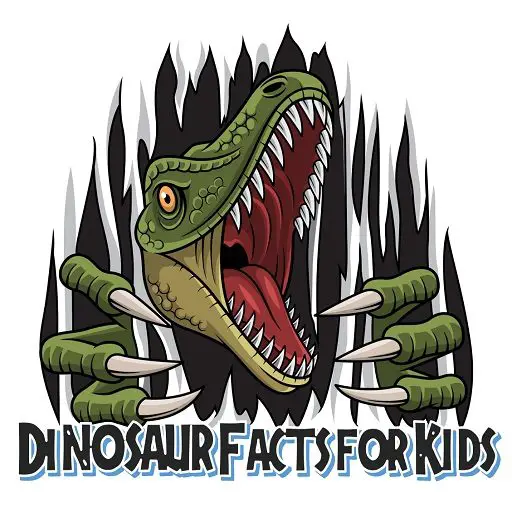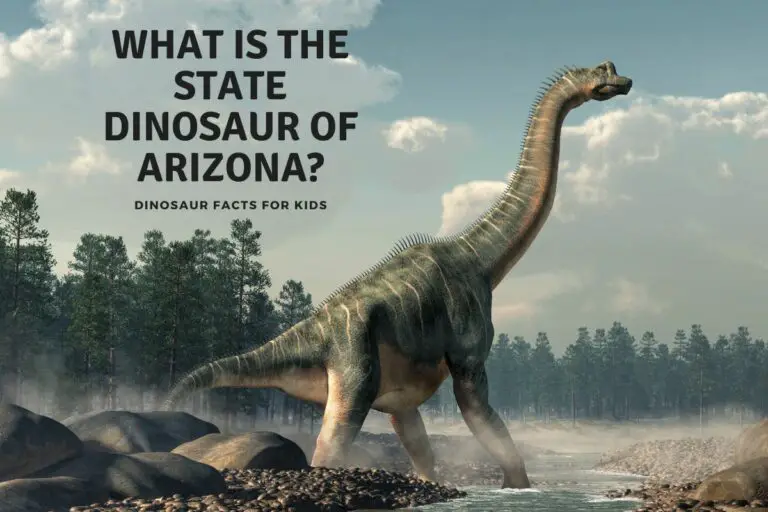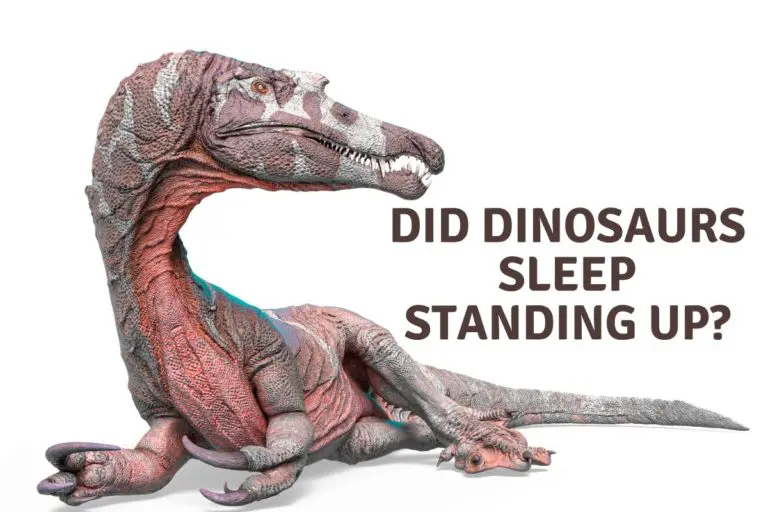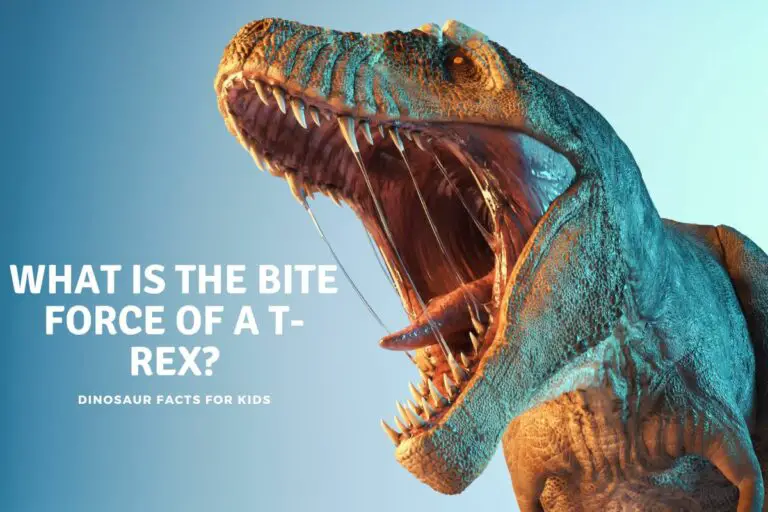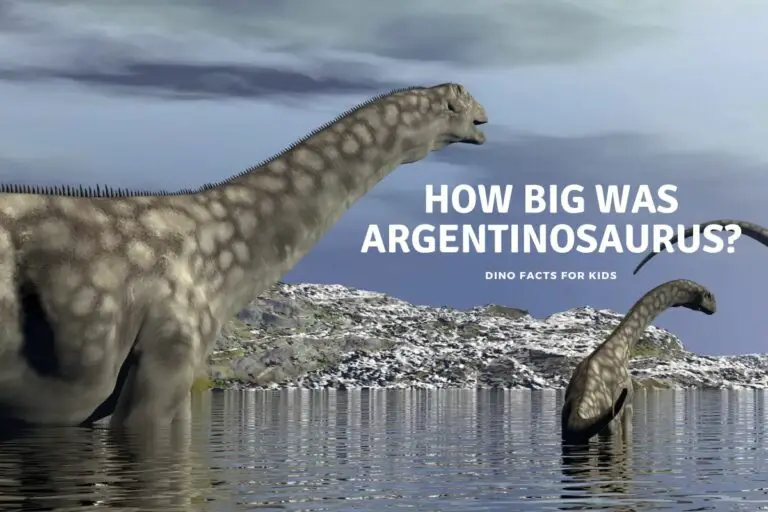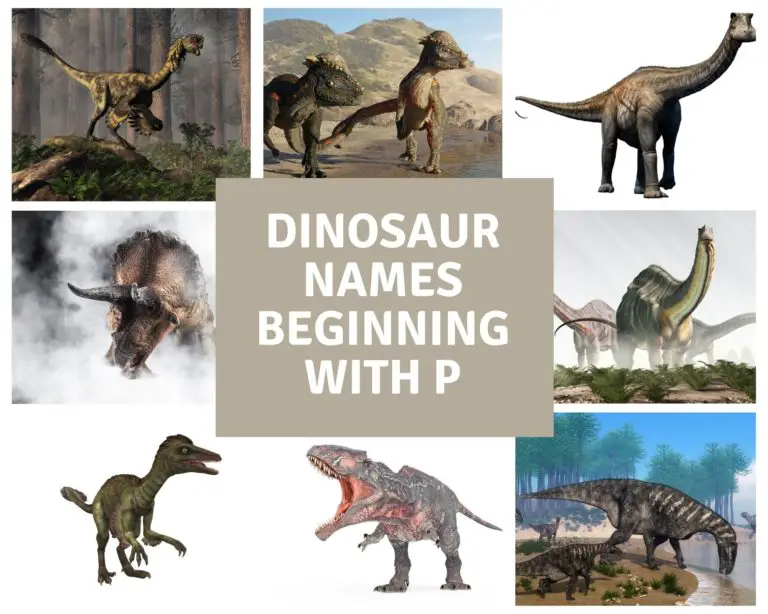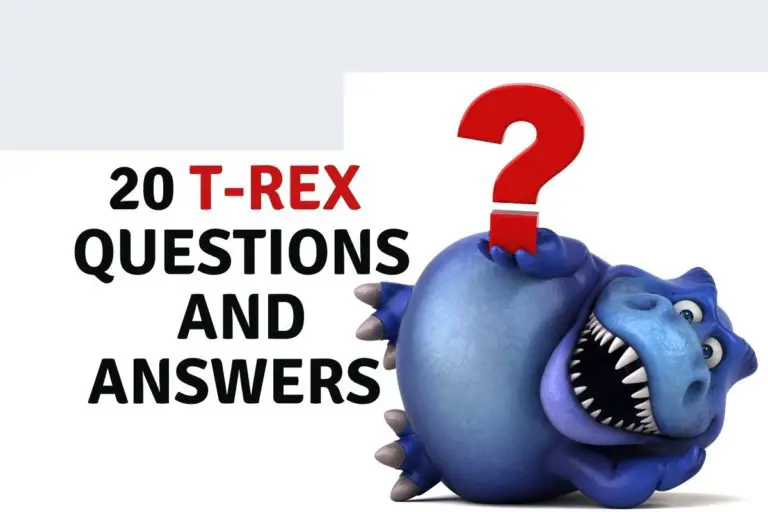Could a Whale eat a Megalodon: Livyatan Vs. Megalodon.
The prehistoric ocean was home to formidable predators some of which dwarf their modern counterparts. Two such creatures were Livyatan, a massive sperm whale named after a biblical sea monster, and Megalodon, the largest shark to have ever lived.
Both were apex predators of their time, ruling the oceans with unparalleled might. However, would these marine titans have crossed paths? If they had, who might have emerged the victor? Let’s take a dive (ha!) into the prehistoric oceans and explore What would happen when these two huge predators met. Could a species of whale eat a megalodon and reverse what we currently think?
Comparing Livyatan and Megalodon
To do that we first take a look at both the Livyatan and the Megalodon to see what made them such successful and powerful animals. We will take a look at their size, where they lived in the ocean and the likelihood of them interacting as well as some of the other toothy Whales they may have encountered a Megalodon back then as well.
Livyatan: The Biggest Teeth Ever!
The Livyatan melvillei, (named after a biblical sea monster and the author of Moby Dick) often just called Livyatan, was a prehistoric sperm whale living around 13-12 million years ago. Comparable to a modern sperm whale in size, Livyatan reached lengths of up to 60 feet, with its enormous skull alone measuring up to 10 feet.

Unlike its present-day relatives, Livyatan had massive teeth on both jaws, some of which were up to (36 cm (14 inches) long — the largest of any known animal they also fit together means it had a shearing bite. – Could bite off chucks of prey not just grasp
. It is believed to have hunted large marine animals, including smaller whales and seals as well as Giant Squid like its modern day counterpart.
Speaking of Giant Squid and Octopus we have an article on of Megalodon and Kraken here on the site.
its brain was much larger in size than the Megalodon’s, and Livyatan may have used complex hunting strategies, like modern day killer whales, including, although we don’t know this, pack hunting behavior. ( note at this size it is very much under debate if Livyatan would have hunted in packs though)
Megalodon: The Most Powerful Bite Ever!
Megalodon, a prehistoric shark, which we have covered extensively on the site ( you can check out other links below) is considered one of the most powerful predators in all vertebrate history.
Living from about 23 to 3.6 million years ago, Megalodon reached sizes of up to 60 feet, with jaws capable of exerting tremendous bite force.
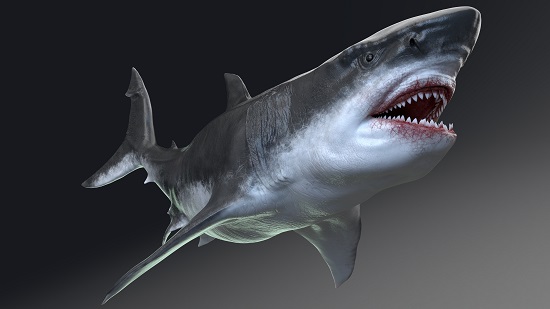
It was equipped with five rows of serrated teeth — some up to seven inches long — perfect for wounding and tearing into prey.
Megalodon is believed to have fed primarily on large marine mammals, such as whales and dolphins, making it a direct competitor with Livyatan for food resources. We take a look at if it would have eaten Giant squid here.
With its speed, strength, and size, the Megalodon an Apex predator with little to fear apart from other megalodons.
or did it, As we will see from the table below, as big as megalodon was it wasn’t the only well armed animal in the oceans and Livyatan certainly could have given it cause for concern. Could a whale eating shark be at risk from a species of whale?
Did Megalodon and Livyatan live at the same time?
The Livyatan existed around 10 million years ago during the Miocene epoch, a time when large marine mammals were abundant. Which was fortunate considering its diet! There have been similar fossilized teeth found that date from 5 million years ago also suggesting it or a similar toothed whale survived much later.
On the other hand, Megalodon lived from 23 to about 3.6 million years ago, extending from the Miocene into the Pliocene epoch.
Given these timelines, it’s quite likely that these two marine titans overlapped for a significant period. and also with their similar diet and food sources it maybe they came into contact with each other fairly regularly.
However, coexistence doesn’t necessarily mean combat as we will explore in the next section.
Did Megalodon and Livyatan live in the same place?
Livyatan, similar to Killer whales today, is thought to have hunted near the surface although unlike killer whales it is thought to have eaten baleen whales, although not the size of the Blue whale or similar. Whales up to 10 metres or 33 feet are thought to have been more likely.
it also would have eaten dolphins, sharks, and seals when the opportunity arose.
Megalodon, also would have been a shallower water predator, and was equally as wide spread in the oceans of the Miocene and Pliocene. it does appear to have had a preference for warmer waters. Its Diet also would also have included whales, although possibly larger ones than Livyatan, dolphins and seals.
So both animals likely inhabited areas with an plenty of large marine mammals, which were both their main food sources and if we know anything about predators is that they don’t like someone competing for their lunch!
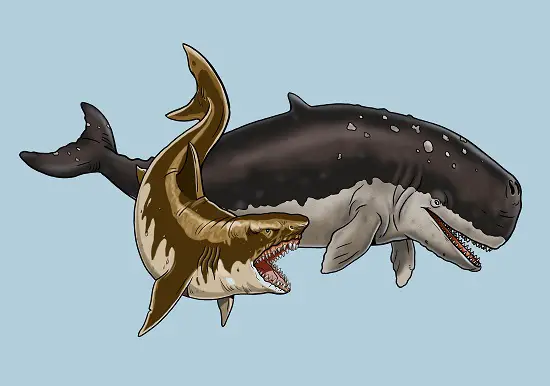
Livyatan Vs. Megalodon The Fight
We have learned that Megalodon and Livyatan lived in the same areas, Lived in the same time periods, the Pliocene and Miocene, and both had a taste for large marine mammals, both were Apex predators. To quote Jurassic World Dominions Kayla Watts …
If you put two Apex predators in one valley, pretty soon there’s only only gonna be one.
Kayla watts
of course the ocean is much bigger than a valley but you get the idea, where they meet there will be heat!
While, and we want to stress this, the realistic outcome of the two meeting, over a whale carcass floating for example, would most likely NOT result in a fight as one would invariably back down, swim away and wait,
there would quite possibly been less frequent times when they either tried to fight, or that one saw the other as prey. That is what we offer our opinion on here.
If a confrontation were to occur between Livyatan and Megalodon, it would undoubtedly be a damaging to both animals.
Both were similar in size and equipped with powerful jaws and gigantic teeth, capable of inflicting lethal injuries to each other. Both were used to tackling large powerful prey, and both were apex predators.
Livyatan, with its larger brain, may have had the upper hand in terms of intelligence and it also had larger, though fewer teeth
Megalodon’s robust build and powerful bite could have given it an edge in a physical altercation and that its teeth, although smaller ( but certainly not small) were likely sharper and able to bite and withdraw weakening the Livyatan ( if it got a bite in)
Although we personally think that the megalodon would have won most encounters between it and a Livyatan, it would not come risk or cost free and there would certainly be times when it would have lost, fatally so, these fights. this is why we think that on most occasions, unless actively hunting and ambushing both predators would have stayed away from each other where possible.
We have a proviso to this
Did Livyatan hunt in packs
While we think it unlikely that megalodon lived in packs, shoals or groups, whales do often live, travel, feed and hunt together.
Although we do not have conclusive evidence that Livyatan was a pack hunter, if that ever is discovered it would add a whole new dynamic to any fight or altercation between the two predators. Currently given its size it is thought it likely was possibly a lone predator.
As we can see, and we take a brief look at below, There are whales today, that while a little larger and heavier, do take on and eat the largest predatory sharks in our oceans today. Killer whales attack great white sharks in groups successfully to eat ( mostly their livers) and scaling that up, with the addition of 14 inch teeth, and it is not completely inconceivable that if ( huge if!) Livyatan did live and hunt in packs that we may be able to add megalodon to their dinner menu!
One against one, and it is likely a fight neither a Meg or a Livayatan would want to take part in though. The video below disagrees but is still cool to watch.
| Attribute | Livyatan | Megalodon | Killer Whale | Modern Sperm Whale |
|---|---|---|---|---|
| Length | Up to 60 ft | Up to 60 ft | Up to 32 ft | Up to 62 ft |
| Weight | Up to 50 tons | Up to 50 tons | Up to 6 tons | Up to 45 tons |
| Number of Teeth | Approximately 40-50 | Approximately 276 | Approximately 48 | 18-26 (in males) |
| Teeth Size | Up to 14 inches | Up to 7 inches | Up to 4 inches | Up to 8 inches |
| Prey | Large marine mammals | Large marine mammals | Varied: Fish, seals, squid | Mainly Squid |
| Known Predators | None (Apex Predator) | None (Apex Predator) | None (Apex Predator) | Orcas, large sharks |
| When Alive | 13-12 million years ago | 23 to 3.6 million years ago | 11 million years ago to present | 20 million years ago to present |
| Depth Lived | Unknown, likely deep-sea | Surface to 400 ft | Surface to 850 ft | Surface to 7,380 ft |
Although it doesn’t look like, on current knowledge, that the Meg 2: The Trench movie will be featuring a Livyatan it is certainly have a Kraken sized giant octopus give the Megalodon a run for its money and we explore this in the article linked here and below.
Was it work the risk for a Meg and a Livyatan to hunt each other.
As the oceans apex predators, both Livyatan and Megalodon would likely have avoided unnecessary risk. A confrontation between these two giant animals would have been life threateningly risky for both of them.
Injuries that they could inflict each other, even if one did win would put them at huge risk from any other predator in the sea and unless absolutely necessary for defense they would have likely tried to avoid any full on confrontations.
This behavior is pretty common among predators, which often prefer to preserve their strength for hunting rather than engage in high-risk combat. They may huff and puff and threaten each other but the actual times they would come to ‘bites’ would be, we think. – for both their sakes – relatively rare.

Is there Evidence of Livayatan and Megalodon Confrontations?
Fossil records offer vital clues about prehistoric life. However, direct evidence indicating battles between Livyatan and Megalodon is scare. One report from the Mirror newspaper suggests bones of Livyatan have been discovered with bite marks from what is thought to be a Megalodon. More on the link and we have other links in the references section below.
However the fossils of both creatures mainly consist of teeth, (and skulls of Livayatan) which provide limited insights into their behaviors or interactions. While they most likely did encounter each other, fossils do not provide definitive evidence ( yet) of how those encounters would play out.
Could a Killer Whale Take on a Megalodon?
Modern killer whales (orcas) are predators known for their intelligence and cooperative hunting strategies. They can grow up to 32 feet in length and weigh up to 6 tons and have been recorded attacking and eating (parts) of Great White sharks.
However, the Megalodon was on an entirely different scale, reaching lengths of up to 60 feet and weighing as much as 50 tons and even a large pod would not take this one without considerable, ( very considerable) risks to themselves.
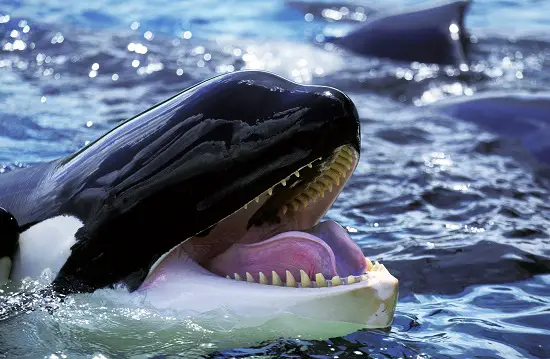
While orcas are known for taking down large prey, including great white sharks, the size and power of the Megalodon would present a significant challenge.
Megalodon’s jaws, equipped with rows of large, serrated teeth, could exert a tremendous bite force. In contrast, killer whales use their teeth mainly for gripping, not tearing apart prey.
The novels in ‘The Meg” Series give their opinion on these encounters very directly, with the killer whales not posing any threat to a megalodon, and conversely the Megalodons (fictional of course) causing the population of Killer whales to go down.
Although orcas are highly intelligent and use sophisticated hunting strategies, it’s unlikely to the point of impossible, that a single orca could take down a Megalodon.
A pod of orcas, using coordinated attacks, could potentially harass a Megalodon, but the outcome of such an encounter remains speculative. The size and strength of the Megalodon would realistically put it out of reach for even the most determined killer whales.
Could a Modern Day Sperm Whale Take on a Megalodon?
Modern sperm whales are impressive creatures, with males reaching lengths up to 62 feet and weighing up to 45 tons. They are among the deepest diving mammals and possess the largest brains of any animal, (20lbs) suggesting high intelligence.
However, they lack the robust, slicing teeth of their prehistoric relative, Livyatan, and primarily use their teeth for grasping squid, their main prey.
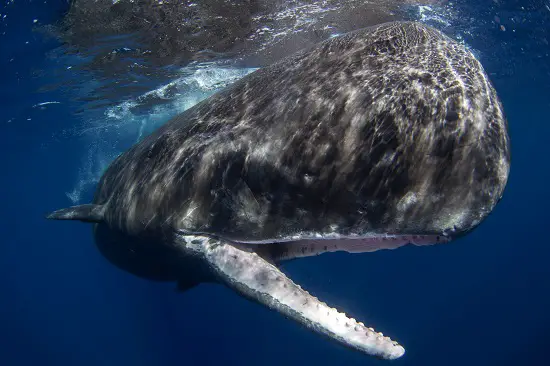
Megalodon, being an apex predator of its time, was adapted to hunting large prey, including whales. The modern sperm whale, while sizable, would likely have been vulnerable to a Megalodon attack rather than the other way round.
It’s important to note, though, that size isn’t everything. Sperm whales live in social groups and can display defensive behaviors, such as forming a ‘marguerite formation’ where they circle around their young, tails out, to fend off potential threats.
While it’s possible that sperm whales might have been able to fend off a Megalodon under certain circumstances, such as within a well-coordinated pod or group, a one-on-one confrontation would likely have been lethal for a modern day sperm whale and certainly not for the Megalodon.
Conclusion
While the thought of a no holds barred battle between Livyatan and Megalodon is pretty awesome Although they lived in the oceans at the same time and were likely to meet each other an actually violent fight is would have been rare, if they occurred at all.
The inherent risks of such a fight for both animals would have probably outweighed any potential rewards. if on the rare occasion they did happen our money is on the Megalodon, if the Livyatan was alone, even with those 14 inch teeth. The whale was smarter and surely would have thought fighting the, comparatively, less intelligent shark a no win situation.
If the Livyatan was in a pod, well then we think of how Killer whales deal with great White sharks, and all bets are off, and we thank the stars we would never see this for real!
F.A.Q’s
Q: Could a Megalodon have taken down a Livyatan?
A: Given its size and strength, Megalodon likely preyed on large marine mammals, including whales. However, whether it could take on a formidable predator like Livyatan would depend on the size of both and most likely who got first bite in and where. In reality like most predators despite threatening behavior most encounters likely ended with one of the two backing down.
Q: Which creature was bigger, Livyatan or Megalodon?
A: Both Livyatan and Megalodon were similar in size, reaching lengths up to 60 feet. Their weights also are comparable, with both creatures estimated to weigh up to 50 tons at their maximum adult sizes. megalodon was likely smaller on average though. .
Q: What prey did Livyatan and Megalodon eat?
A: Both Livyatan and Megalodon likely fed on large marine mammals. This could include smaller whales, seals, and possibly dolphins.
Q: Did Livyatan and Megalodon live at the same time?
A: Yes, their existence overlapped during the Miocene epoch, suggesting they could have potentially encountered each other in the ancient seas.
Q: Could a pod of killer whales have taken down a Megalodon?
A: While orcas are known for their cooperative hunting strategies, the size and power of the Megalodon would have presented a significant challenge. A pod may have been able to harass a Megalodon, but whether they could take one down is uncertain.
References
- https://animalscomparison.com/megalodon-vs-livyatan-who-would-win/
- https://www.quora.com/Speculative-scenario-who-would-win-in-a-duel-between-a-Carcharodon-Megalodon-and-a-Livyatan-Melvillei
- https://en.wikipedia.org/wiki/Livyatan
- https://www.hngn.com/articles/237449/20210824/archaic-battle-sea-titans-scarred-teeth-fossils-reveal-ancient-livyatan.htm
- https://www.livescience.com/ancient-sharks-bit-whale-noses
- https://www.sciencedirect.com/science/article/abs/pii/S0031018216305417
Hi, I am Roy Ford a General Studies and English Teacher who has taught all over the world. What started as a fossil collection became a great way to teach, motivate and inspire students of all ages and all over the world about dinosaurs and from that and children’s love of dinosaurs came the site dinosaur facts for kids, a resource for all ages.
